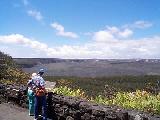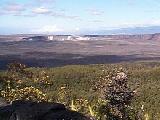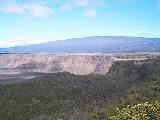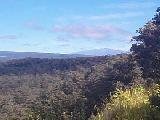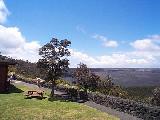
Halemaumau is the crater within the caldera. It's floor is measured at 3,412 feet above sea level, whereas the floor of the rest of the Kilauea caldera is higher at approximately 3,640 (the rim near the Volcano House is 3,980)
This crater last had some activity in 1974. It is a spectacular feature of the caldera, and with it's contrasting white walls, it looks like a moon crater reminding you that you are some place special.
